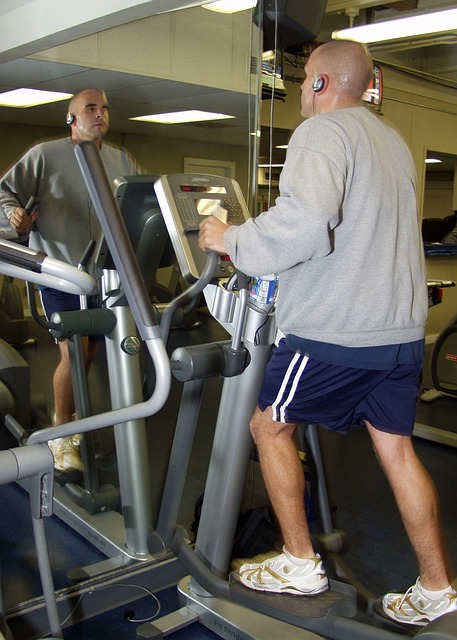Cardiovascular exercise is any activity that raises your heart rate. Though some people use cardio only for weight loss, it also offers other advantages. There are numerous cardiovascular activities, but the most crucial criteria for attaining your fitness goals are consistency, length, and intensity. Continue reading to learn more about this sort of exercise, the benefits it provides, and how to develop a safe and successful cardiovascular regimen.

What Exactly Is Cardio?
Cardio exercise, aka aerobic exercise, is any activity that elevates your heart rate into your desired heart rate zone. This is the zone where the greatest fat and calories are burned.
Walking, cycling, and swimming are some of the most prevalent cardio exercises. Household activities such as vacuuming and mopping, on the other hand, can count as cardiac exercise.
Cardio differs from other sorts of exercise, such as weight training, because it relies on your body’s use of oxygen during the workout session. A person’s cardiac ability or capacity might differ depending on a variety of circumstances.
According to American Heart Association research, genetics have a 20% to 40% influence on what you can perform cardio-wise. Furthermore, females have a 25% lower cardiac capacity than males, and this capacity declines with aging in both sexes.
This is not to argue that you cannot improve your cardiovascular health because of your genes, gender, or age. Bear in mind that it is important to understand that there are numerous elements that might determine how (and how well) your body reacts to cardio exercise.

The Advantages of Cardio
There are few hobbies that can provide the physical and mental health benefits that aerobic exercise can in a short amount of time. Cardio advantages include the following:
- Burns fat and calories, making weight loss simpler.
- Improves sleep quality, particularly if activity is moderate to vigorous in intensity.
- Increases lung capacity (the amount of air your lungs can retain).
- Improves your sex life by enhancing your body’s ability to feel aroused, improving your body image, and possibly even aiding with sexual dysfunction caused by pharmaceutical treatment.
- When you conduct weight-bearing aerobic workouts like hiking or climbing stairs, your bone density increases.
- Reduces stress by boosting your ability to deal with problems in a constructive way.
- Promotes happiness and can even aid with despair and anxiety.
- Enhances your self-esteem and confidence in how you appear and feel.
- Diminishes your chances of having a heart attack, having high cholesterol, having high blood pressure, having diabetes, and having some types of cancer.
- Encourages those around you to exercise by setting a positive example.
- Strengthens the heart, allowing it to work less hard to pump blood.

How to Select Cardio Exercise
The first step in determining the best cardio workout for you is to identify the types of activities you enjoy. Consider what fits your personality and what you’d be comfortable incorporating into your life. This is critical because if you don’t enjoy the workout, you’re less likely to persist with it in the long run.
Running, cycling, and walking are all excellent outdoor activities. If you like to work out in a gym, you have several options, including stationary cycles, elliptical machines, treadmills, rowing machines, climbers, the pool, and more.
Do you want to raise your heart rate at home? Jumping rope, jumping jacks, running in place, and burpees are examples of at-home aerobic activities. You might also get your own treadmill or elliptical machine. You might also think about employing:
- Exercise DVDs
- Fitness applications
- Workouts over the internet
You might not even know what you want. In this scenario, try out a variety of activities to locate the one or ones that you enjoy the most. This approach might be hit or miss, so don’t be hesitant to attempt something and then move on to something else if it doesn’t work.

Workouts for Beginners
There are a few beginning workouts that can help you get started if you are new to exercising. These are some examples:
- Cardio for Complete Newbies: This program allows you to select any machine or activity that you are familiar with.
- Beginner Elliptical Workout: The elliptical is excellent for increasing strength while minimizing impact (meaning that it is easier on your joints).
- Beginner Stationary Bike Workout: If you want a low-impact workout, try this 20-minute indoor cycling program.
Another alternative is to begin with 10 to 20 minutes of moderate-intensity brisk walking. This means you should be at a Level 5 or 6 on a scale of zero to ten, with zero being sitting and ten being the highest level of effort conceivable.
What Should the Duration of a Cardio Workout Be?
Most adults should obtain 150 minutes of cardiac exercise per week, according to health experts. Cardio is fantastic because you don’t have to work out for an hour to reap the benefits.
Even 10-minute sessions contribute toward your weekly aerobic activity minutes. So, figure out how much work you need to perform per week and divide it up in a way that works for you.
If you’re just getting started, breaking up your sessions into 10- to 15-minute pieces may feel less intimidating. Increase your time by 5 minutes when the workout becomes more comfortable. Gradually increase to 30- to 60-minute sessions.
Cardio Workout Frequency
The frequency of cardio workouts is determined by a number of factors. Your fitness level, schedule, and goals are among them.
If you’re an exercise newbie, have a desire to be healthier, are short on free time, and aren’t concerned about losing weight, a small bit of exercise every day can help. If you’ve been exercising consistently for years, are used to going to the gym for 60 minutes at a time, and are more concerned with muscle gain than fat loss, cardio 3 to 4 days per week should suffice.
When considering frequency, it is also necessary to consider intensity. Every day, light or moderate-intensity aerobic workouts can be undertaken. However, if you practice high-intensity training, you will require additional recovery days in between workouts. Combining the two allows you to work multiple energy systems while also preventing burnout.
Cardio Frequency Guidelines
Your training frequency will be determined by your fitness level and your schedule. The fundamental principles are as follows:
- Try moderate-intensity cardio for overall health. Do basic cardio for 30 minutes a day, five days a week, or 20 minutes of intensive cardio three days a week. You can also do a combination.
- To accomplish your weight loss and/or regaining objectives, you may need to undertake more than 300 minutes of moderate-intensity activity per week.
- A healthy body weight requires 150 to 300 minutes of moderate-intensity movement per week.
Excessive cardio is a bad idea that can backfire. Keep it within reason (3-6 days per week, depending on your fitness level), vary your effort, and don’t forget to take rest days as needed.
When Real Life Interrupts
What happens if you fail to obey the rules? If you’re still working on endurance and conditioning, it may take a few weeks to gradually increase your frequency of exercise.
If a hectic schedule or other hurdles are impeding your progress, try to squeeze in exercise as many days as possible. To maximize the time you do have, try shorter, more intensive circuit training routines. Try the following brief workouts:
- Low-Impact Cardio Workout for 10 Minutes: A low-impact workout that employs your own body weight as resistance and does not require any equipment.
- 100 Calorie Burn in 10 Minutes: Six different workout alternatives keep things interesting.
Keep in mind that if you are unable to follow the instructions due to a hectic schedule, you may struggle to achieve your weight loss goals. If you are unable to put in the effort required to achieve your objectives, you may need to alter your lifestyle. If it doesn’t work, adjust your objective to reflect where you are in your exercise or weight loss journey.
Intensity of Cardiovascular Exercise
You can increase your intensity once you’ve gotten accustomed to exercising (and are up to 30 minutes of continuous exercise). The intensity of your workout is important because of:
- Calorie burn: The amount of calories you burn is directly proportional to your level of intensity.
- Monitoring is simple: Monitoring your exercise intensity is simple with a heart rate monitor or the perceived exertion scale.
- Saving time: When you’re limited on time, increasing your intensity burns more calories.
- Variation: You may easily modify the intensity of your workout without needing to discover a new exercise to do.
How Hard Should You Push Yourself?
Your ideal workout intensity level is determined by a variety of factors, including your fitness level and goals. You can focus on three distinct levels of intensity during your workouts, and you can even combine all three levels into the same workout:
- High-Intensity Cardiovascular Exercise: This corresponds to 70% to 85% of your MHR, or a 7 to 8 on the perceived exertion scale. This level is difficult to complete and leaves you out of breath. If you’re new to exercise, try beginner interval training to push yourself harder for shorter periods of time.
- Cardio at a moderate intensity: Moderate intensity corresponds to 50% to 70% of your MHR. In its Physical Activity Guidelines, the United States Department of Health and Human Services frequently recommends this degree of intensity. This is the level you are targeting during your workouts.
- Low-Intensity Cardio: This sort of exercise is defined as exerting less than 50% of your MHR, or a level 3 to 4 on the perceived effort scale. This is an excellent level to work at during warm-ups or while you’re squeezing in other exercises throughout the day, such as walking.
Keep in mind that the target heart rate computation is not perfect. You might try combining perceived exertion and heart rate to discover a range that works for you.
Cardio Exercise for Weight Loss
While the Physical Activity Guidelines for Americans recommend that adults experience 150 minutes of moderate-intensity physical activity per week, the amount of exercise required to lose weight is frequently much more. If you wish to reduce more than 5% of your body weight, you may need to devote at least 300 minutes per week.

According to these guidelines, moderate-intensity activity is defined as any form of activity that raises your heart rate. They do, however, show that adding high-intensity interval training often resulted in greater benefits for persons who are overweight or obese.
Including weight training in your weekly exercise routine might also help. It works by boosting the amount of lean muscle mass you have. Muscle increases your body’s energy requirement, resulting in more calories burned both at rest and while exercising.
When you combine fitness with a nutritious diet, you can accelerate your weight loss. The American Dietary Guidelines encourage consuming fruits, vegetables, grains, low-fat dairy, lean proteins, and healthy oils while minimizing added sugar, saturated fat, sodium, and alcohol.
A Final Thought From DigEnet
Consult your doctor prior to beginning this or any other exercise regimen. Check if the workout is safe for you to perform. Also, pay attention to your body. If it indicates that you are doing too much, it is time to lower the intensity, frequency, or duration of your workouts.
Whatever you do, keep your cardio workouts as easy as possible. Start small and set a goal of doing some form of cardio each day, even if it’s just a 5-minute stroll. Schedule it on your calendar and try it at the same time every day. Be persistent, it will get easier with experience.
